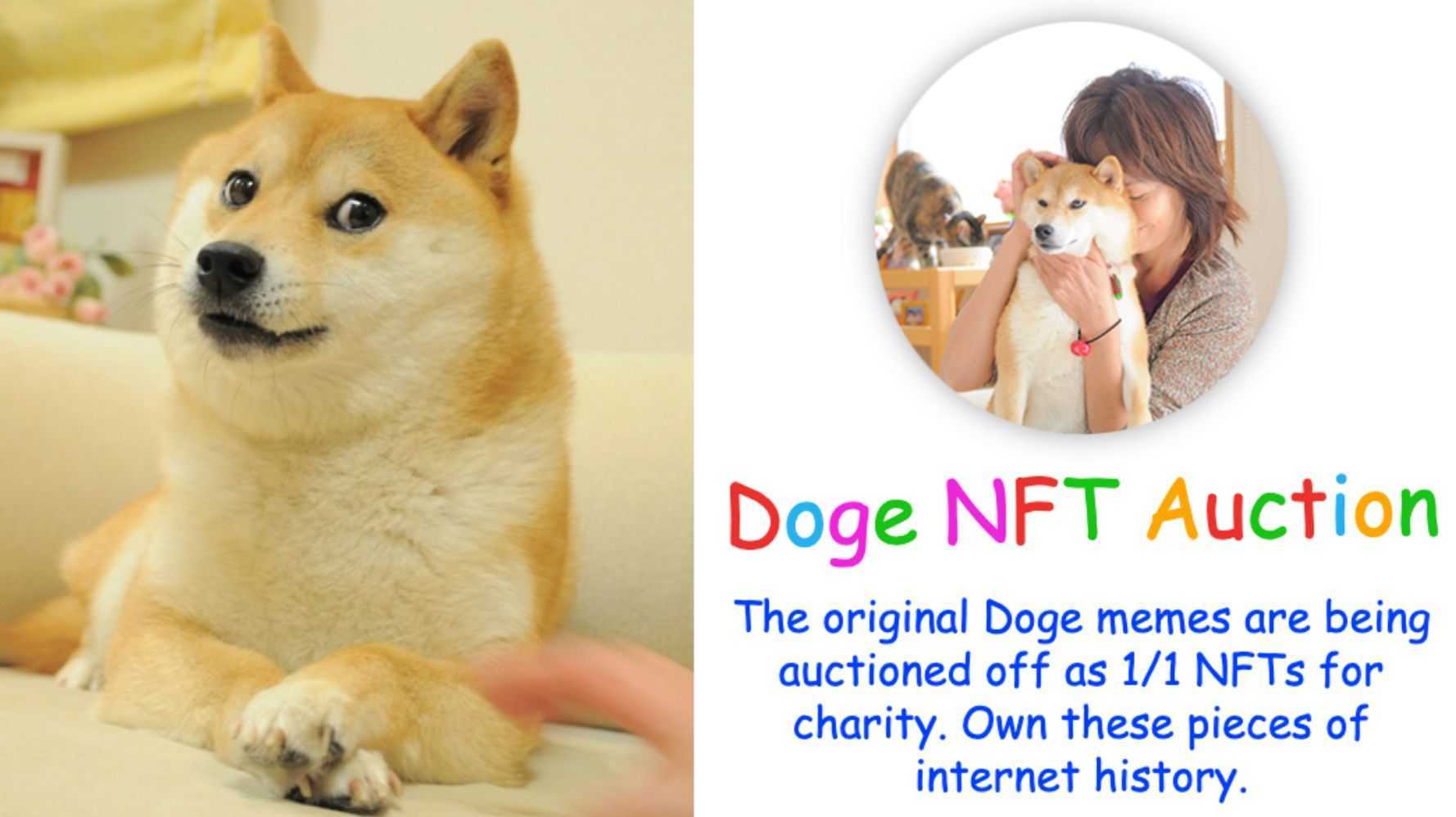The Meme Economy
There is a project that seems, at least to us, to be a great place to point newcomers. Most importantly it is fun, it's full of web3 OGs, it's accessible, and it connects participants to what is arguably one of the most significant memes to ever grace the internet! First, a little internet history

(BTW, none of what follows is about Doge Coin)
After having many conversations with friends about their desire to play around with the NFT space we are realizing that there are a handful of core questions that arise. The first, and most obvious question is what are they? We covered that question here. Once they have a basic understanding, at least in theory, of what an NFT is, the second question is usually how? And the third, which is not unrelated to the second, is where? While we answered the basic mechanics of the second question, how, in our posts on wallets and transactions, we have not necessarily said too much about where just yet. We owe you a post on marketplaces so stay tuned for that one. For now we will just say here, here, here, here, here, and a bunch of other places too.
After those most basic of questions are out of the way, there is an inevitable next question. “What project should I ape (buy) into?” People are usually looking for some alpha (aka insider information) on what projects are going to moon (rise in value). If you can’t tell, we are also teasing a Web3 glossary post that we are going to need to get to you sooner rather than later. This question comes quite naturally as blockchain tokenizes assets and Web3 is very much a financial evolution from Web2 creating the possibility of digital ownership. Still, this isn’t a question we aren't excited about. (Unless we happen to be sitting on some serious alpha of course!) Everywhere you turn, people are prefacing every conversation with “this is not financial advice” and for good reason. Nobody wants to tell you what to invest in just to risk their reputation with you, also, there are regulations that make doing so carry significant legal liabilities. That being said, the following is not financial advice.
There is a project that seems, at least to us, to be a great place to point newcomers. - Most importantly it is fun.
- It's filled with a ton of Web3 OGs.
- It is very cheap to participate in
- And it connects participants to what is arguably one of the most significant memes to ever grace the internet!
So for those of you wondering about what project you might wanna ape into, this is our humble suggestion. Again, it’s not financial advice, probably won’t make you rich, but it will offer you a great education on the process, connect you to an incredible community, and will, we hope, make you smile whenever you think about it.
First, a little internet history.
It’s safe to assume that most of you are familiar with this dog picture:
Of course you are, it’s the Doge!
Ok first let’s take a second and address the use of the misspelled word "doge" to refer to a dog. It actually dates back to 2005, when it was mentioned in an episode of Homestar Runner's puppet show. In the episode titled "Biz Cas Fri 1", Homestar calls Strong Bad his "d-o-g-e" while trying to distract him from his work.
A few years later, on February 13th, 2010, a 51 year old Japanese kindergarten teacher Atsuko Sato posted several photos of her Shiba Inu rescue dog Kabosu on her personal blog. Among the photos included a shot of Kabosu sitting on a couch while glaring sideways at the camera with raised eyebrows. This would begin one of the most baffling and influential journeys into meme culture over the following decade+. At first, Kabosa was a titan of animal memes that flooded the internet of the early 2010s alongside the likes of Grumpy Cat and others. The image was soon remixed to include a series of phrases written in comic sans like “much wow” and other such phrases that would eventually evolve into the broken english “heckin good doggo” speak that would come to define how a very large corner of the internet would talk about dogs for at least a decade.
The Doge ruled mainstream meme culture. Her little smirk and overwhelming adorableness skyrocketed this meme into the zeitgeist making her what has come to be considered the internet's most dominant meme. Whether Tumblr, Reddit, YouTube, or 4Chan there was nowhere that was exempt from the Doge’s omnipresence.
Then, with the rise of NFTs (Non- Fungible Tokens like we discussed here) digital ownership became a possibility on the Internet. For the first time, any form of digital content could essentially be “signed” by its creator to distinguish “the original” from “the rest”. Sure enough, the original Doge picture that grew to become one of the most influential memes of all time, was minted as an NFT by Atsuko Sato and sold at an auction to PleasrDAO. PleaseDAO is a decentralized autonomous organization (like we discussed here) that is made up of some OG crypto folks that accumulated quite large bags during the earliest DeFi and NFT days. Together they have formed this art collecting empire that is acquiring culturally significant artifacts like the one-of-one copy of WuTang’s Once Upon a Time in Shaolin and the Doge, which at the time of sale was the highest price ever paid for a meme NFT.
PleasrDAO later fractionalized this iconic NFT, using fractional.art, into $DOG tokens. This means that they tokenized the DAOs ownership of this ERC-721 NFT into 16,969,696,969 ERC-20 (fungible) $DOG tokens. By holding $DOG, anyone can now own a part of the original Doge NFT! Because there are more than 16 trillion tokens, one token is currently less than a penny. This accessibility is another thing that we love about this project!
$DOG tokens can be purchased at fractional.art/vaults/the-doge-nft or swapped with other ERC-20 tokens on decentralized exchange like Uniswap, Sushiswap, or Matcha.
PleasrDAO has retained 55% of the token supply for their initial investment and general stewardship of the project, they made 20% of tokens available to general circulation, and dedicated 25% to the community fund which can be governed by a dao.ge, the recently announced DAO that is made up of token holders.
Anyone can join the community's Discord server and verified $DOG holders get access to a bunch of extra channels. The community is fun and experimental as they are basically pioneering the ‘meme economy.’ Since the ERC-20 tokens are fungible and there are so many of them, it can possibly seem a bit to abstracted from the original meme NFT that all tokens are backed by so they took it a step further.
Since $DOG is backed by the DOGE they divided the total token supply by the number of pixels in the actual image (307,200) and found that 1 pixel is 55,240 $DOG tokens. They then launched the Doge Pixel Portal where $DOG holders can stake 55,240 tokens and in exchange mint a single pixel randomly selected from the actual photo. For example, here is a pixel from the sparkle in her eye!
There are so many reasons to love this project, not least of which is the Doge herself. From the amazing and innovative community to the overall tone of fun, this is, in our opinion, among the best projects to engage with for newcomers to the Web3 space. It is inexpensive, meaningful, and can take holders through concepts like fungible ERC-20 cryptocurrencies, ERC-721 Non-Fungible Tokens, Decentralized Autonomous Organization, and it has one foot in the deepest internet history while it's other is solidly in the future of the internet.
Whether you are planning to ape in or not, we hope this article helped walk you through a real life project and illustrate some of the creative ways that these technologies are being used to build community and spread ‘much wow.’
While not specifically related to this particular project, the following tweet is an insightful post from Balaji Srinivasan, a brilliant voice in the space, about the evolution of the meme economy. (If you are not already, we would definitely recommend following and engaging Balaji BTW.)
The meme economy will become real.
— Balaji Srinivasan (@balajis) March 12, 2021
- Meme creators will make NFTs
- Timestamps give proof-of-first
- Memegen partially goes on-chain
- Memetic spread is more traceable
- Memers become millionaires
- Risky art becomes uncensorable & monetizable
- Art moves outside regime control
